I love homemade ghee (and store boought if I’m being honest), and am ecstatic that it’s Whole9-approved for the latest version of the Whole30. Ghee – a traditional Indian preparation of clarified butter – has been one of my go-to fats for high-heat cooking ever since I went Paleo, and I use it to prepare everything from vegetable stir-fries to meaty stews.
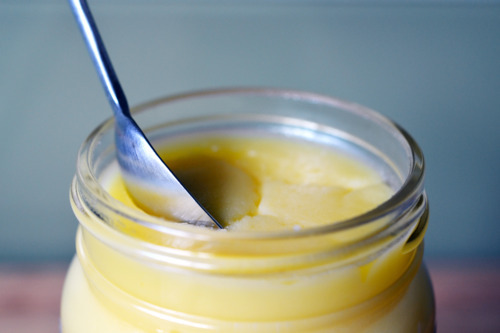
Yes, it’s cheaper and easier to get your hands on butter, and normally, if you’re okay with small amounts of full-fat dairy from grass-fed cows, more power to you. But if you’re on a Whole30, butter’s out.
The solution? Buy some ghee, or make some yourself. It’s not hard to clarify some high-quality butter to remove all the potentially problematic milk solids – and infuse the delicious fat with a deep, nutty taste to boot. I promise you: The process is quick and painless, and you’ll end up with a yummy lactose- and casein-free cooking fat that’ll knock your socks off.
Time to Make Homemade Ghee!
Makes 3/4 cup of ghee
Ingredients:
- 1 cup unsalted butter (I like Kerrygold)
Method:
Start with 1 cup of unsalted butter from grass fed cows. A number of supermarkets and specialty stores (including Whole Foods, Trader Joe’s, and Costco) now stock Kerrygold butter, so don’t skimp out and get the crappy stuff from the gas station snack shop. Quality matters, remember?

Throw the butter into a medium saucepan over low heat, and melt it.

Once the butter’s melted, the clear fat will separate from the milk solids. Continue to simmer the butter gently.

Once it starts bubbling, you’ll know that the water’s cooking off.
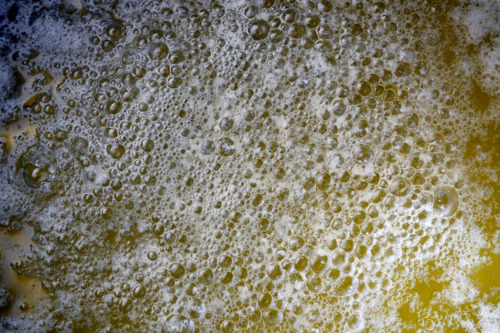
Watch for the bubbles to gradually get smaller, until the surface of the butter resembles a foam. The milk solids will then start to brown, and some of the solids will clump together and cling to the sides of the pan.
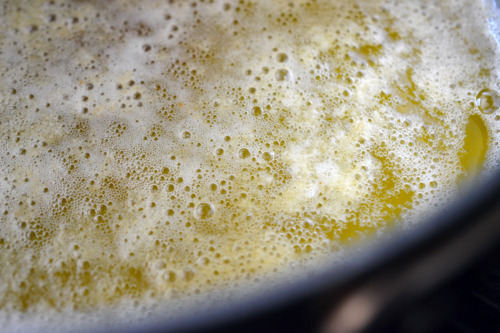
Keep a close eye on the pan. Once the milk solids turn a deep golden brown and start falling to the bottom (about 8 to 10 minutes after the melted butter starts bubbling), remove the pan from the heat.
Strain the hot ghee through a triple layer of cheesecloth into a heat-safe bowl or measuring cup.
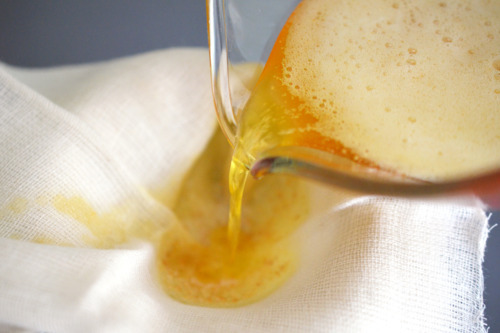
See all the nasty bits you just filtered out? Toss ‘em out.
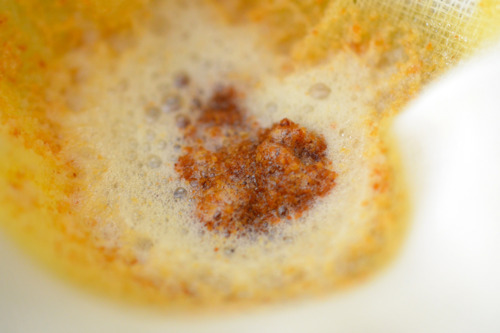
Store the ghee in a sealed glass jar.
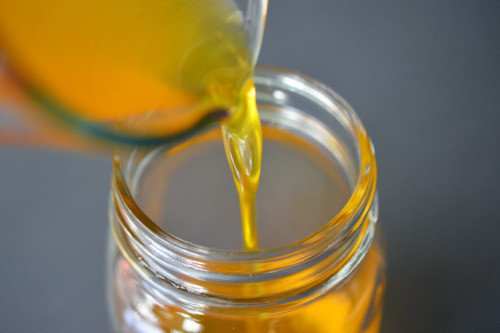
After the milk solids have been removed, you don’t need to refrigerate the ghee – but I recommend keeping your homemade ghee in the fridge to be on the safe side.

Once it’s cold, the ghee will be opaque and silky-smooth – perfect for scooping out with a spoon and throwing into a hot skillet…

…or an oven-baked sweet potato.

Homemade ghee isn’t difficult to make, and the ready-made stuff is a fantastic option, too – especially if you’re pressed for time and/or lazy. We’ve whipped up batches of our own ghee, but I also dig my big jar of Whole30-approved Pure Indian Foods’ organic grass-fed ghee.
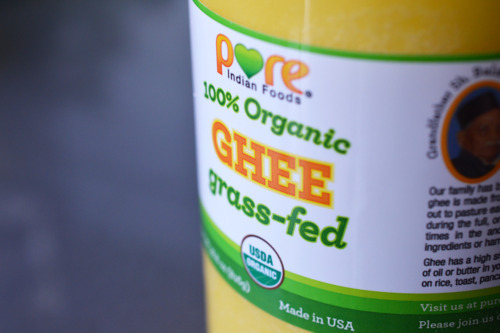
No excuses, people: Get your ghee on.
Looking for more recipe ideas? Head on over to my Recipe Index. You’ll also find exclusive recipes on my iPhone and iPad app, and in my cookbooks, Nom Nom Paleo: Food for Humans (Andrews McMeel Publishing 2013), Ready or Not! (Andrews McMeel Publishing 2017), and Nom Nom Paleo: Let’s Go! (Andrews McMeel Publishing 2021).
PRINTER-FRIENDLY RECIPE CARD
Ghee
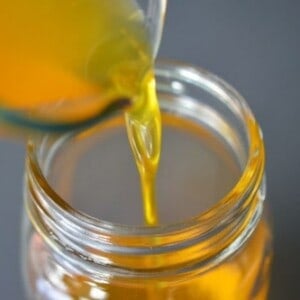
Ingredients
- 1 cup unsalted butter from grass fed cows, I like to use Kerrygold!
Instructions
- Throw the butter into a medium saucepan over low heat, and melt it.
- Once the butter’s melted, the clear fat will separate from the milk solids. Continue to simmer the butter gently.
- Once it starts bubbling, you’ll know that the water’s cooking off.
- Watch for the bubbles to gradually get smaller, until the surface of the butter resembles a foam. The milk solids will then start to brown, and some of the solids will clump together and cling to the sides of the pan.
- Keep a close eye on the pan. Once the milk solids turn a deep golden brown and start falling to the bottom (about 8 to 10 minutes after the melted butter starts bubbling), remove the pan from the heat.
- Strain the hot ghee through a triple layer of cheesecloth into a heat-safe bowl or measuring cup.
- Toss out the nasty bits that were filtered out.
- Transfer the ghee from the bowl or measuring cup into a sealed glass jar.
- Once it’s cold, the ghee will be opaque, silky-smooth, and ready to cook with!
Notes
Nutrition
Nutrition information is automatically calculated, so should only be used as an approximation.
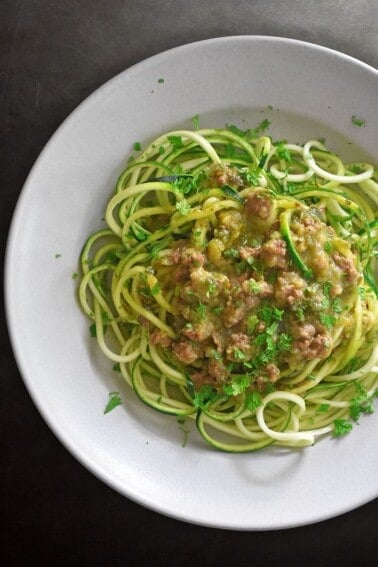
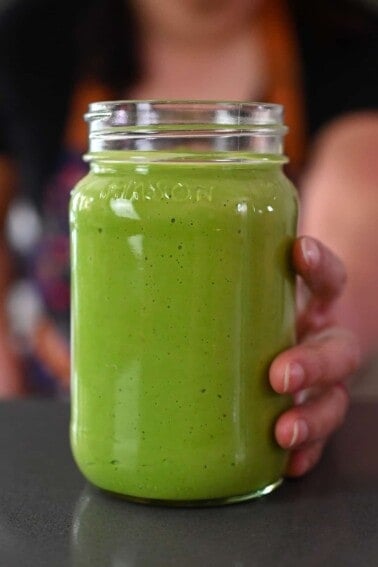
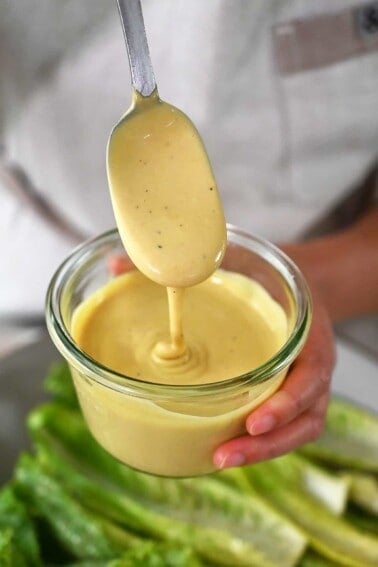
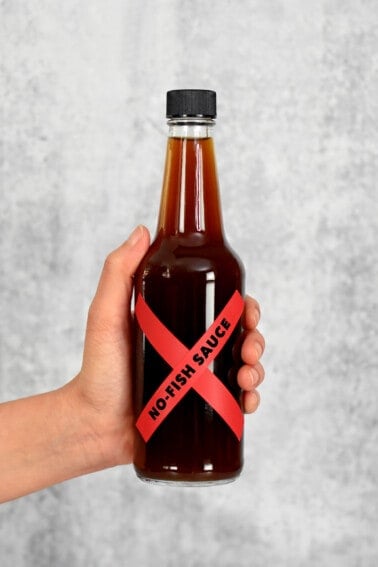
What’s wrong with extra virgin olive oil?
Nothing! Ghee has a higher smoke point so you can cook at higher temps than EVOO.
Is this considered casein free? I have a casein allergy, so want to be sure. Thanks!!
If you have a casein allergy, I would buy ghee that has been lab-tested to be casein free. There isn’t a guarantee you can remove all the casein when you make this at home.
I am a Sconni and prefer to use local whenever possible. I am no stranger to the kitchen. I usually buy Amish roll butter that is salted. Salt is a preservative and a flavor enhancer. I am not sure if it is grass fed cows it comes from. Is there an issue with non-grass fed cow milk and salted butter? How long will ghee last in refrigeration and how long may it sit out at room temperature without becoming rancid?